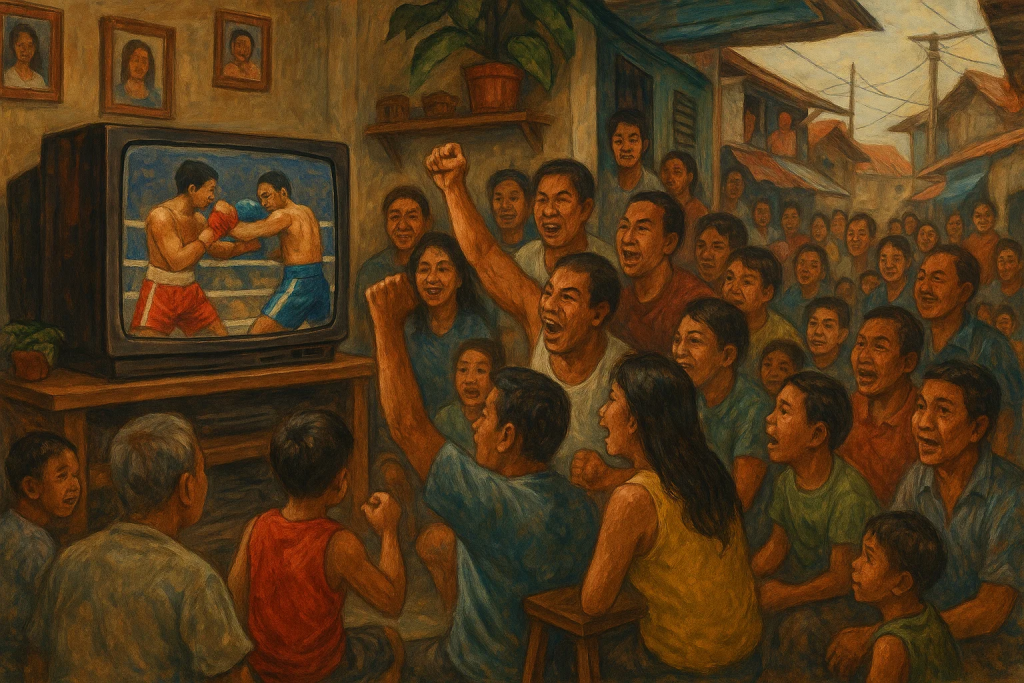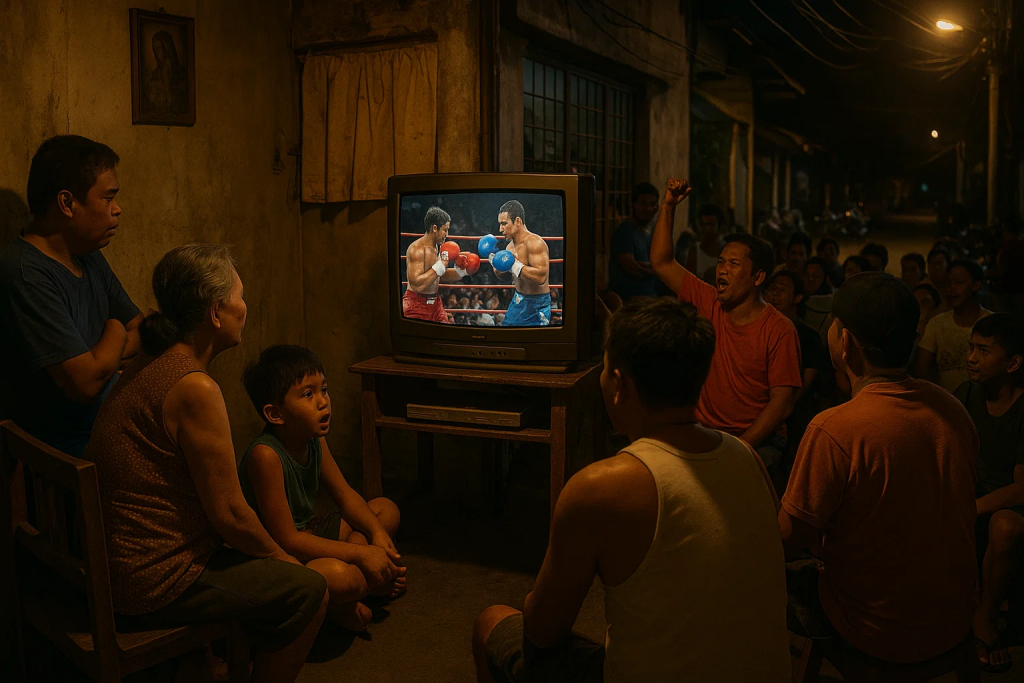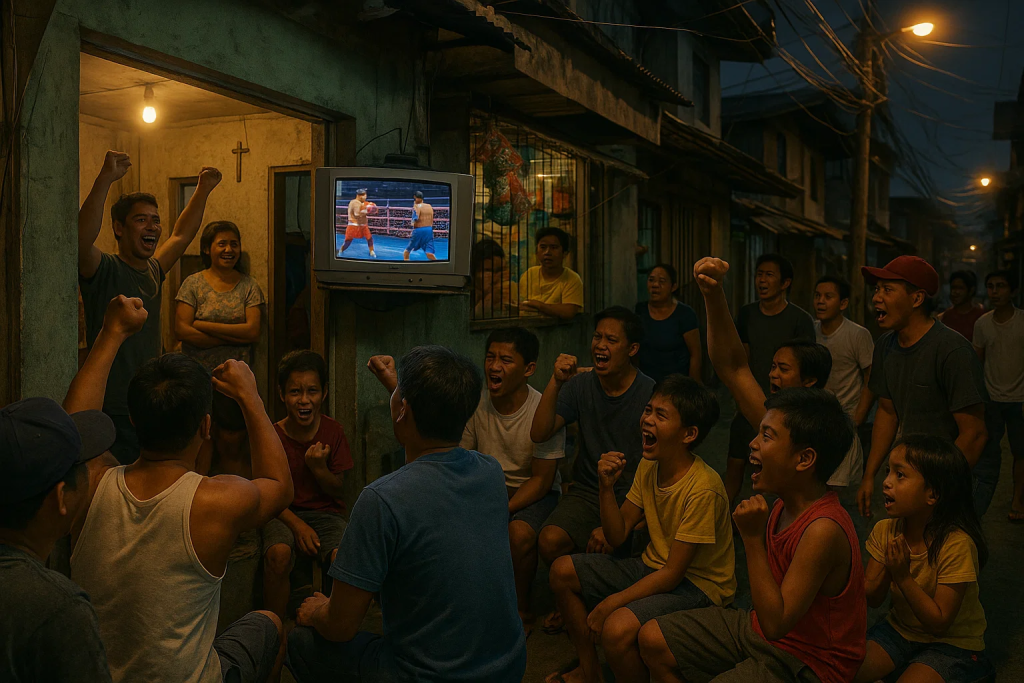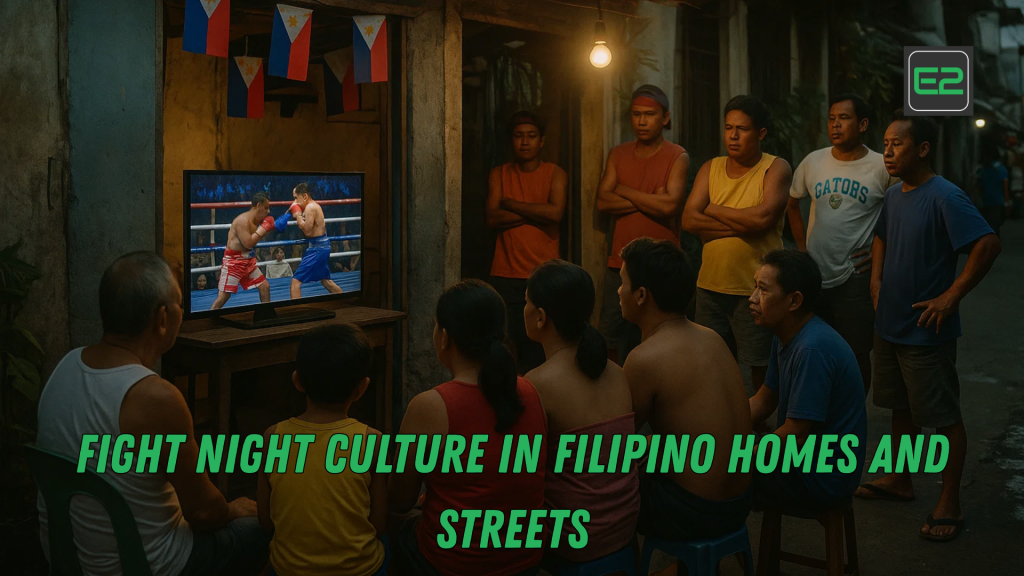Table of Contents
In the Philippines, Fight Night is more than just a sporting event; it’s a cultural phenomenon. Whether it takes place in the confines of a modest Filipino home or on the bustling streets where spectators gather around makeshift rings, Fight Night has captured the hearts of many Filipinos across generations. Rooted deeply in the nation’s love for boxing, mixed martial arts, and street fighting, the culture surrounding Fight Night has evolved into a communal experience that transcends beyond just watching a fight—it’s about connection, pride, and tradition.
This article explores the significance of FightNight in Filipino homes and streets, its historical origins, its evolution, and the social impact it has on Filipino communities today. Through this exploration, we will uncover why Fight Night is such an integral part of Filipino culture and what it means for the future of combat sports in the Philippines.

1. The Rise of Fight Night Culture in the Philippines
1.1 Fight Night: A National Tradition
The Philippines has long been known for its boxing prowess, with world-renowned champions such as Manny Pacquiao, Nonito Donaire, and Marlon Tapales bringing pride to the nation. Boxing is not just a sport; it’s a cultural event that captivates millions of Filipinos, especially on Fight Nights.
- Manny Pacquiao’s Impact: Pacquiao’s career brought boxing into Filipino homes, where families would gather around the television or radio to watch his fights. These moments, filled with anticipation and excitement, are ingrained in the collective memory of Filipinos.
- Street Fight Culture: While formal boxing is celebrated, informal, underground fights on the streets have also played a role in developing the culture of Fight Night. In smaller towns and neighborhoods, street fights or bare-knuckle fights are organized where locals showcase their skills, often for pride and community recognition.
1.2 Fight Night as a Social Event
In Filipino homes, FightNight is not just about the fight itself. It becomes an occasion where families and friends come together, sharing food, drinks, and camaraderie while cheering for their favorite fighters. This aspect of Fight Night encourages a sense of community that is central to Filipino culture.
- The “Barkada” Experience: The Filipino concept of “barkada,” or a group of friends, is often central to the Fight Night experience. People gather in living rooms or outdoor spaces, turning the fight into an event where people celebrate together, enjoy each other’s company, and bond over their shared love of combat sports.
- Food and Drinks: No Filipino FightNight is complete without food. Snacks such as lechon, kare-kare, and sinigang are shared while the action unfolds, making the experience feel like a festival in itself. The act of gathering to watch a fight becomes a celebration of Filipino hospitality and social traditions.
2. Fight Night on the Streets: Informal and Raw
2.1 Street Fighting: A Subculture of Combat
Beyond the official rings and televised events, street fighting has been an informal, yet vibrant, subculture in the Philippines. From urban neighborhoods to rural towns, street fights have long been a part of Filipino social life, even though they are often unregulated.
- Bare-Knuckle Fights: In many areas, bare-knuckle fights or informal boxing matches occur, often fueled by personal rivalries, local disputes, or for entertainment. These fights typically happen in the streets, parking lots, or vacant lots where impromptu crowds form to watch.
- Underground Events: These types of street fighting events often have no official organizers or referees. They are unsanctioned and can be risky for the fighters. Despite this, they attract crowds, as street fights often tap into the raw energy of Filipino pride and toughness.

2.2 Street Fight Etiquette and Rules
Though street fights in the Philippines may seem chaotic, they often follow an unspoken set of etiquette and rules. There is a level of mutual respect among the fighters, and the audience plays a significant role in the atmosphere.
- Mutual Respect: Before engaging in a fight, fighters often shake hands or acknowledge each other as a sign of respect. This shows the community-oriented nature of street fighting, where participants are not just fighting for themselves, but for pride and honor in their neighborhood.
- Winning by Knockout: Like in professional boxing, a street fight in the Philippines typically ends when one fighter is knocked out or incapacitated. The crowd determines the winner through their reaction and cheers, with the most dramatic moments often getting the loudest applause.
3. The Growing Influence of Fight Nights in Filipino Entertainment
3.1 Fight Nights in Filipino Television and Online Platforms
With the rise of digital media and social platforms, Fight Nights have reached a larger audience in the Philippines. Local TV stations, social media, and streaming platforms are increasingly broadcasting combat sports events, allowing fans to watch from the comfort of their homes or on the go.
- Reality Shows and Documentaries: Filipino TV networks have capitalized on the popularity of Fight Night by producing reality shows and documentaries that follow the lives of aspiring fighters. These shows often give viewers a glimpse into the personal struggles, training regimens, and journey of local fighters.
- Online Streaming: With platforms like YouTube and Facebook Live, amateur fight events in the Philippines can now reach global audiences. Fighters use these platforms to showcase their skills and build a following, making it easier for local athletes to rise in the ranks.
Valorant Inspires the Young Filipino Gamers: Community Spotlight
3.2 The Impact on Local Fighters and Training
FightNight culture in the Philippines has had a significant impact on the training and development of local fighters. Many Filipino boxers, Muay Thai fighters, and mixed martial artists (MMA) come from humble beginnings, often learning their skills in the streets before moving on to professional training.
- Street to Ring Journey: Many local fighters start by participating in street competitions and then advance to more structured training programs. The passion and raw talent nurtured in informal Fight Nights contribute to the growth of Filipino combat sports.
- Gym Training and Professional Coaching: As the popularity of Fight Night increases, more fighters are gaining access to professional gyms and world-class coaches, which further elevates the standard of Filipino fighting talent.
4. The Cultural Impact: Pride, Identity, and Community
4.1 Fight Night and Filipino Identity
In the Philippines, combat sports, especially boxing and street fighting, are intrinsically linked to Filipino identity. The country’s long-standing boxing history, coupled with the rise of street fighting culture, has fostered a deep sense of pride and toughness among Filipinos.
- Symbol of Resilience: The image of a Filipino fighter, whether in the ring or on the street, is often symbolic of the nation’s resilience. Filipino fighters are known for their hard work, determination, and ability to rise from adversity, characteristics that resonate deeply with the public.
- Cultural Significance: Fight Nights are not only about the physical confrontation but also about representing the community. Whether through informal street fights or official contests, these events serve as a form of cultural expression—a way to prove oneself and gain respect in one’s neighborhood or region.
4.2 Community Spirit Through Fight Nights
The social aspect of Fight Nights in the Philippines is incredibly important. The contests bring together people from all walks of life, fostering a sense of community that is central to Filipino culture.
- Family and Friends Bonding: Fight Nights, especially those in homes, are often family affairs. Relatives and friends gather, share stories, and watch the matches together. These moments of togetherness are cherished and play a significant role in strengthening social ties.
- Local Pride: The pride of one’s hometown or community is often at stake in these events. Fighters represent more than themselves—they represent their neighborhood or region, and this adds a layer of pride and excitement to the event.
5. The Future of Fight Night Culture in the Philippines
5.1 Transition to Formal Competitions
While informal street fights have been a staple of Filipino culture, the rise of organized events, better access to training, and a growing audience suggests that the future of Fight Night culture may move toward more regulated and professional competitions. As boxing, Muay Thai, and MMA continue to rise in popularity, the Philippines may see more sanctioned Fight Nights, bringing a more structured approach to the sport.
- Organized Fight Events: Local organizations and professional leagues may begin to organize more events that replicate the excitement and energy of street fights, but with the safety, structure, and professionalism that come with regulated competition.

5.2 The Role of Social Media and Globalization
Social media will continue to play a huge role in the future of Fight Night culture in the Philippines. Platforms like Facebook, Instagram, and YouTube will allow fighters to share their journeys, promote events, and gain sponsorships. This increased exposure may lead to greater interest in combat sports and create new pathways for Filipino athletes to succeed on the global stage.
Frequently Asked Questions (FAQs)
1. What is Fight Night culture in the Philippines?
FightNight culture refers to the tradition of organizing and participating in boxing, street fighting, and MMA contests, either in official events or informal gatherings, in Filipino communities. It’s an event that brings together family, friends, and fans to celebrate local pride and athleticism.
2. How did Fight Night culture start in the Philippines?
The culture of FightNight in the Philippines is rooted in the country’s long-standing boxing tradition, starting with iconic figures like Manny Pacquiao and evolving into informal street fighting and local competitions.
3. Are street fights common in the Philippines?
Yes, street fights or informal fighting events are common in some parts of the Philippines. These often occur in neighborhoods and towns where people gather to witness local talent display their fighting skills.
4. How has Fight Night impacted Filipino fighters?
FightNight culture has contributed to the development of Filipino fighters, with many starting in the streets before moving on to formal training. It has also played a crucial role in creating a sense of community and pride, especially in local neighborhoods.
5. What does Fight Night represent in Filipino culture?
FightNight represents resilience, pride, and community. It is a way for individuals to prove themselves, gain respect, and connect with others through the shared experience of combat sports.
